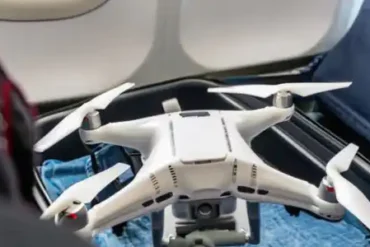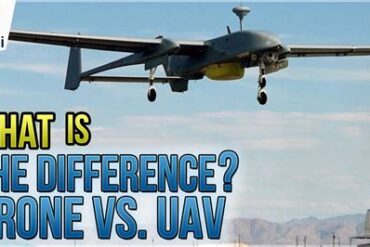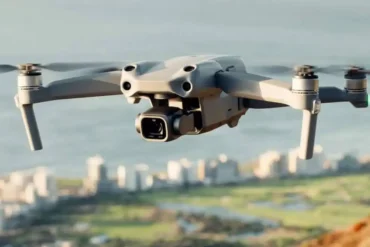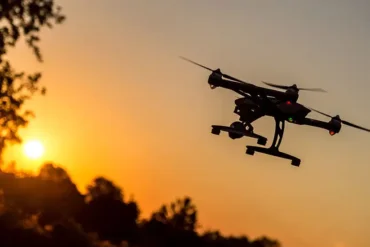Drones have been crucial to US military operations since the 1990s. The MQ-1 Predator and the MQ-9 Reaper, creations by General Atomics in San Diego, are at the forefront of Western military technology, deserving a closer look.
For those with an Air Force background or ongoing military service, the nuances between these drones are intriguing. Let’s dive into the details, exploring optimal use cases and determining which drone excels strategically.
The Reaper Drone Unveiled
The General Atomics MQ-9 Reaper, a remotely-operated military aircraft, took its first flight in 2001 and officially entered service in 2007. Similar to its predecessor, the Predator, the Reaper is remotely piloted by a ground-based crew of two skilled aviators.
The Genesis of the Reaper Drone
The Reaper drone’s inception can be traced back to overcoming operational challenges faced by the older Predator. About one in three Predators encountered losses due to adverse weather conditions, leading to the development of a more potent and versatile derivative.
Unveiling the Purpose
Differing from its predecessor, the Reaper drone is purpose-built as a combat aircraft while retaining the capability for aerial reconnaissance. With an increased payload capacity and the ability to operate at higher altitudes facilitated by its turbine power plant, the Reaper stands as a formidable advancement.
The Reaper drone gained recognition through precision attacks, notably the elimination of Al-Qaeda leader Ayman Al-Zawahiri in 2022 orchestrated by the CIA. The MQ-9 Reaper, armed with a laser-guided Hellfire R9X missile, accurately targeted Al-Zawahiri on a balcony in Kabul, Afghanistan. In a unique approach, the missile was equipped with rotating blades, ensuring the removal of the target without collateral damage within the building.
This precision weaponry, in the form of missiles launched from the Reaper drone, was also employed in the targeted strike that eliminated Iranian Major General Qasem Soleimani in Baghdad in 2020, shortly after his arrival at the airport. The MQ-9 Reaper demonstrated its capability to reach specific targets with minimal risk to civilian casualties.
In essence, the MQ-9 Reaper stands as a testament to advancements in drone technology, offering a strategic edge in modern military operations.
About the Predator Drone
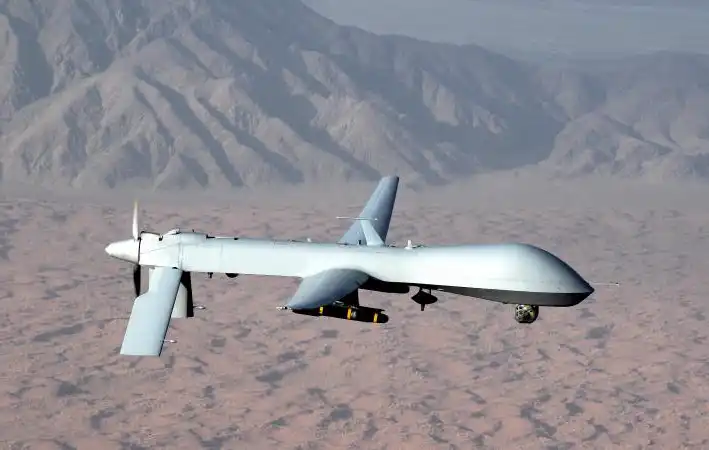
The General Atomics MQ-1 Predator serves as a remotely piloted aircraft (RPA), utilized by the US Air Force and the CIA from the mid-1990s until its successor, the MQ-9 Reaper, took over in 2018. Operated by a ground-based crew of two, the Predator undergoes remote flight with the crew situated in a workspace resembling an aircraft cockpit, albeit more spacious. Each remote pilot is equipped with a monitor fed by the drone’s forward camera, a navigational display, and a control side stick.
Control is facilitated through a satellite link when a direct line of sight is unavailable.
The Genesis of the Predator Drone
Developed primarily for aerial reconnaissance and observation, the Predator drone boasts an array of cameras and sensors for these missions.
The Varied Roles of the Predator Drone
Beyond its reconnaissance focus, the Predator drone underwent modifications to accommodate armaments, including two Hellfire AGM-114 air-to-ground missiles.
Details surrounding combat operations using the Predator remain classified at present. Nevertheless, its substantial role in observation and reconnaissance during the Afghan campaign of 2001 is well-documented.
Initially designated the R-1 Predator (R for reconnaissance), the Predator played a pivotal information-gathering role in the Afghan campaign of 2001.
Later rebranded as the M-1 Predator (M for multi-role), the Hellfire-equipped Predator participated in offensive operations, the specifics of which elude public knowledge.
While certain operational details remain classified, the Predator likely fulfilled strategic roles encompassing:
- Close Air Support: Shielding friendly forces by engaging hostile targets in proximity to neutralize threats.
- Air Interdiction: Often labeled Deep Air Support, this involves targeting enemy elements that might pose future threats to friendly forces.
- Intelligence, Surveillance, and Reconnaissance (ISR): Vital in any military operation, information gathering holds immense importance. Aerial reconnaissance, a cornerstone, provides decision-makers with essential intelligence for securing favorable outcomes.
How do the Predator Drone and the Reaper Drone Differ?
Distinguishing themselves in size and power, the Reaper drone surpasses its predecessor, the older Predator drone. With increased dimensions, weight, and potency, the Reaper boasts an extended range and additional hardpoints for attaching armaments, such as missiles.
The structural disparity extends to the tails of the drones—the Predator features an inverted V-tail, whereas the Reaper’s V-tail is positioned on the upper rear fuselage. Originating from its naval drone heritage, the Predator’s V-tail was designed to fit into a torpedo tube.
You can tell these drones apart by what’s powering them. The Predator keeps going on a 115 horsepower Rotax 4-cylinder motor. That gives it enough gas in the tank to go 460 miles out and back from home base. It can hang out on patrol for 14 hours before it’s time to head home and refuel. Not too shabby!
But the Reaper – now we’re talking! This tough guy is packing a nearly 10 times more powerful 950 horsepower turbo engine. That gives the Reaper way more zip, with better range, speed and ability to fly higher while carrying bigger payloads. And get this – this souped up drone actually saves taxpayer money! At $30 million the Reaper is cheaper than the $40 million little Predator. More drone, more power, and more change in our pockets – I’d call that a winning combo for team Reaper!
How are the Predator Drone and the Reaper Drone Similar?
Both the MQ-1 Predator and the MQ-9 Reaper share the commonality of being crewless, remote-controlled aircraft. Ground-based pilots operate both drones remotely, facilitating direct data transmission along a line of sight when in proximity to the pilots.
Alternatively, both drones can communicate and receive control inputs through satellite connections.
Their overall design showcases similarities, featuring a high aspect-ratio wing positioned midway along the fuselage, along with a tricycle landing gear configuration.
Inverted vertical stabilizers beneath the rear fuselage are shared features, each driven by a pusher propeller mounted at the fuselage’s rear.
Ironically, despite their potential for concentrated damage, both the Predator and Reaper lack substantial defense capabilities. While providing excellent forward and downward vision to operators, they lack the ability to monitor the surrounding space for incoming threats.
Moreover, in the event of detecting hostile activity, neither aircraft possesses the agility for rapid changes in direction or altitude to evade potential threats.
The elongated wings with a high aspect ratio are not constructed to endure high g-loads. Neither drone is formulated for active deployment in conflict zones where it may encounter direct attacks.
Both the Predator and the Reaper have accumulated over one million flight hours each in service.
What sets the Predator Drone apart?
In essence, not a whole lot. The Predator lags in speed, is pricier than the Reaper, and lacks the capacity to carry as much armament.
A noteworthy aspect of the Predator lies in its contributions to the counter-terrorism efforts in Afghanistan and Iraq, much of which remains classified.
To its credit, the Predator faithfully served the US military for numerous years before yielding to the Reaper in 2018. As declassified reports emerge, we may learn of pivotal offensive roles played by the Predator.
The Predator undeniably played a crucial role in safeguarding the nation, directly participating in military campaigns against adversaries and indirectly paving the way for today’s Reaper, a testament to General Atomics’ development journey.
What sets the Reaper Drone apart?
Practically everything.
The Reaper soars higher, farther, and faster than the Predator, equipped to carry an imposing array of ordnance beneath its expansive wings. Capable of accommodating up to four AGM-114 Hellfire missiles, as well as three other weapons like Joint Direct Attack Munitions and Paveway II laser-guided bombs, the Reaper outshines its predecessor.
The Reaper boasts high-profile accomplishments with its precision attack capabilities, safeguarding civilians in conflict zones and instilling genuine concern among adversaries.
Remaining a dutiful offspring, the Reaper acknowledges its progenitor, the Predator, and the pivotal role the elder played in shaping its legacy.
The narrative of these drones unfolds, showcasing their strengths and limitations, each contributing to the evolution of military technology. As we delve deeper into the intricacies of these unmanned aircraft, a comprehensive understanding emerges, shedding light on the past, present, and future of drone warfare.



